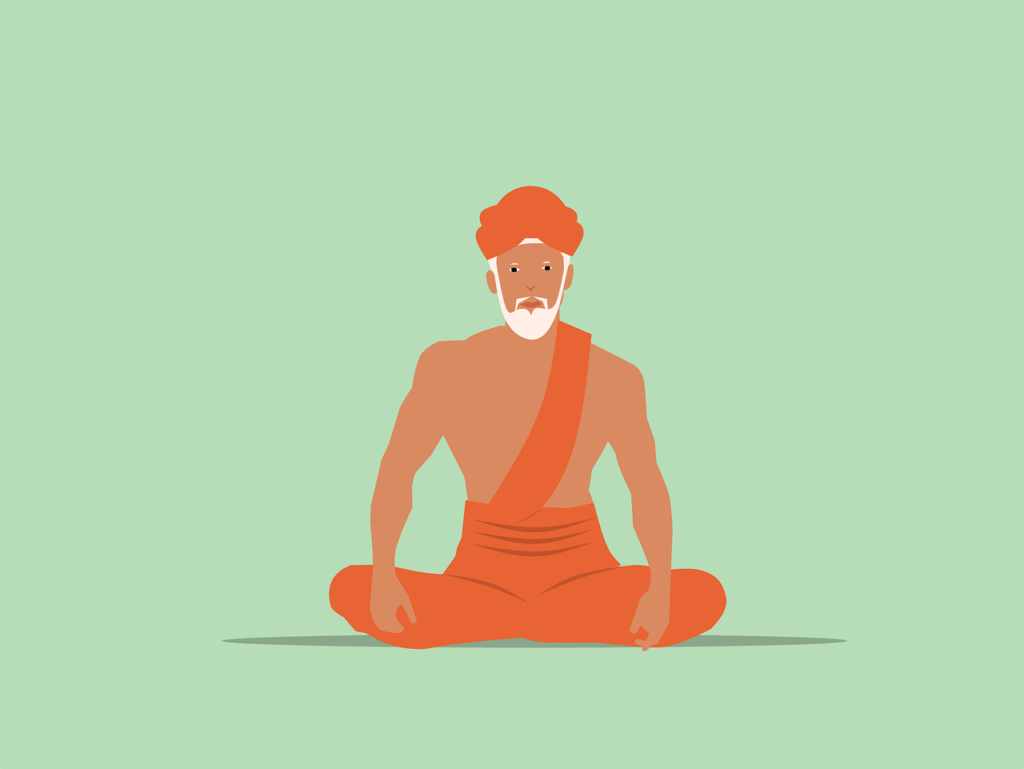
Sanatan Dharma explains that a human being can be classified into four varnas (castes) – brahmana (priests), Kshatriya (Kings/administrators), Vaisya (merchants), and Shudra (workers) depending upon their individual nature and inclinations. Based on their caste (varna), human beings can be assigned some specific occupational duties. Indeed, everyone has a prescribed duty according to the Varnashrama dharma. Those who execute their prescribed duties live peacefully and are not greatly disturbed by material conditions. The spiritual orders of brahmacharya (celibate), grihastha (householder), vanaprastha (retired), and sannyasa (renounced) are called ashramas. If one executes his prescribed duty in both the social and spiritual order, the Supreme Lord becomes satisfied. However, it must be understood that the ultimate objective of this varna system (varna and ashrama) is to gradually purify one’s consciousness so that one grows eligible to serve and please Vishnu, the Supreme Lord. This is also confirmed in Vishnu Purana –
varnasramachara-vata
purusena parah puman
vishnur aradhyate pantha
nanyat tat-tosa-karanam
(Vishnu Purana 3.8.9)
–
Lord Vishnu, the Supreme Lord, is worshiped by the proper execution of prescribed duties in the system of varṇa and ashrama. There is no other way to please the Supreme Personality of Godhead. One must be established in the institution of the four varnas and ashramas.
All the actions that one executes in one’s life must be done to please the Supreme Lord. The ultimate purpose to serve and satisfy the Supreme is the underlying principle emphasized in Sanatana Dharma. This is also confirmed in Bhagavad Gita as follows –
yat karosi yad asnasi
yaj juhosi dadasi yat
yat tapasyasi kaunteya
tat kurusva mad-arpanam
(Bhagavad Gita 9.27)
–
O son of Kunti (Arjuna), all that you do, all that you eat, all that you offer and give away, as well as all austerities that you may perform, should be done as an offering unto Me (Krishna).
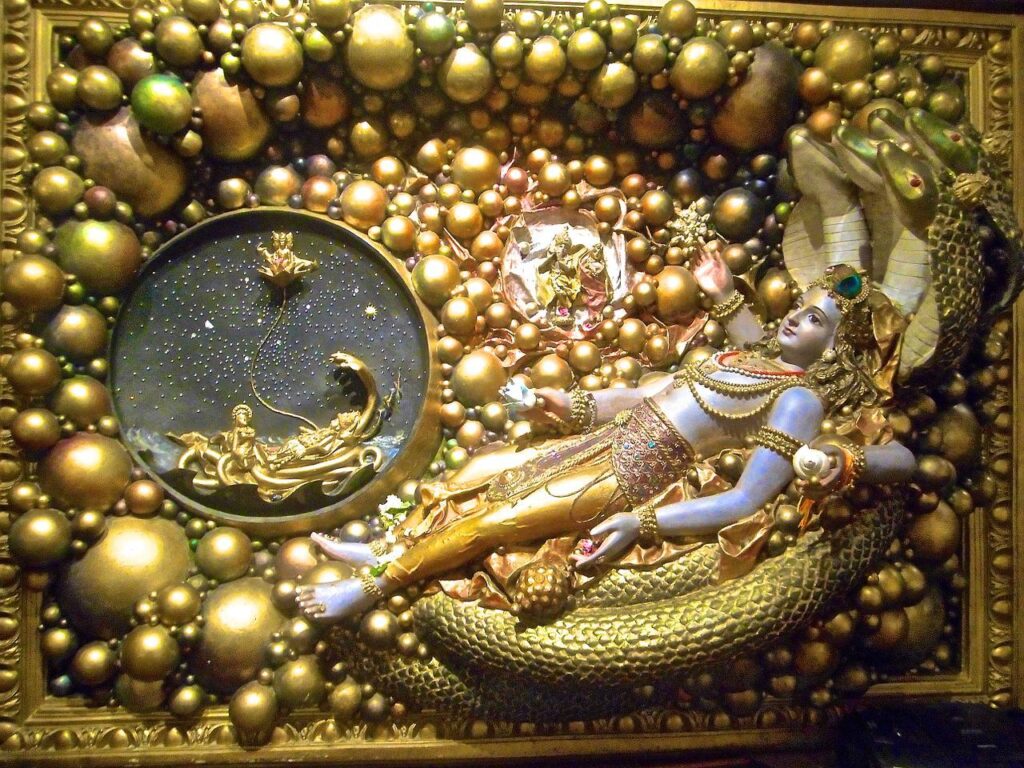
However, if one blindly follows the varna system without realizing its spirit or without developing a service attitude towards the Supreme, then it becomes simply useless and unnecessary labor. This is confirmed in Srimad Bhagavatam as follows :
dharmah svanusthitah pumsam
visvaksena kathasu yah
notpadayed yadi ratim
srama eva hi kevalam
(Srimad Bhagavatam 1.2.8)
–
If one executes the occupational duties of Varnashrama dharma but does not develop devotion unto the Supreme Lord, then his activities are useless. His occupation simply becomes unnecessary labor.
#1 Brahmanas (Priestly class)
The Bhagavad Gita (18.42) states that a brahmana possesses the following qualities –
- Peacefulness
- Self Control
- Austerity
- Purity
- Tolerance
- Honesty
- Knowledge
- Wisdom
- Religiousness
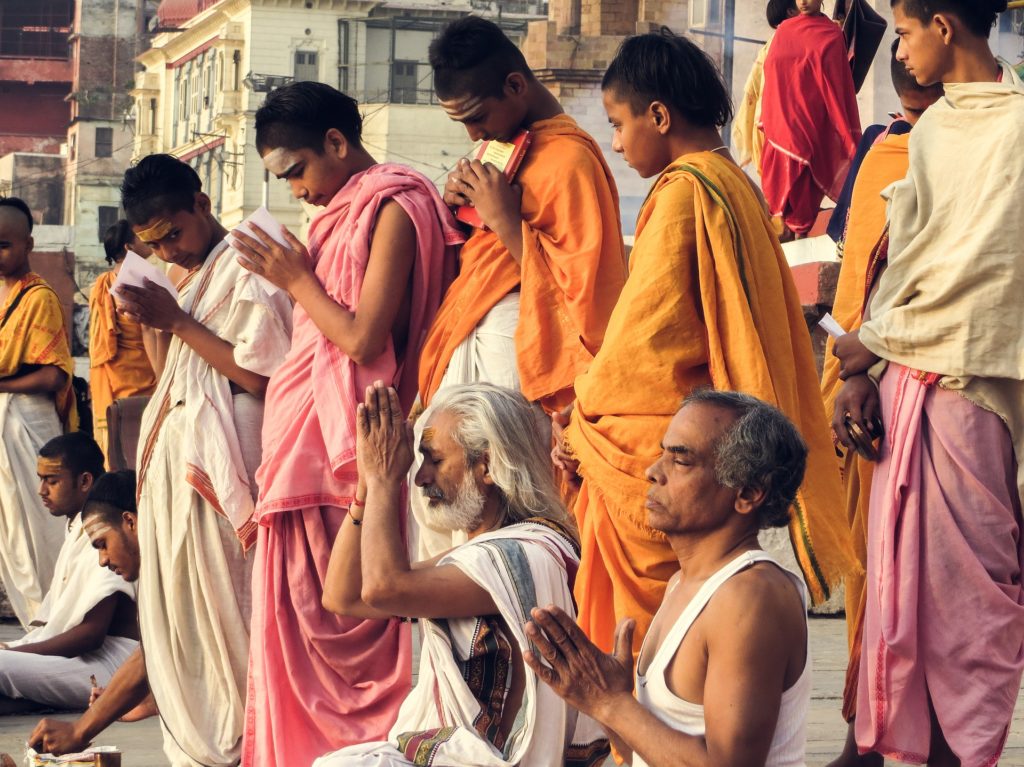
The brahmanas are considered to be situated in the mode of goodness (sattva guna). Brahmana means “one who knows Brahman, the Absolute Truth.” Krishna describes (Bhagavad Gita, 5.18) – “The brahmanas, by virtue of their knowledge, see with equal vision a learned and gentle brahmana, a cow, an elephant, a dog, and a dog-eater (outcast)”. By definition, a brahmana treats everyone equally and thus, out of humility, does not repress anyone.
The brahmanas are the teachers of society. With their knowledge of the scriptures, they guide society toward prosperity and self-realization. The brahmanas advise the Kshatriyas, the administrators, on how to govern to ensure the spiritual betterment of the citizens. The Kshatriyas then use their diplomatic skills to lead society. To ensure that the brahmanas stay free from the pursuit of power, wealth, and prestige and that their work is, as far as possible, without self-interest, brahmanas do not accept a salary for teaching, but rather depend on charity and begging. They don’t accumulate wealth beyond what they need to sustain themselves. The brahmanas depend fully on the mercy of the Supreme Lord, and the other varnas support them for their valuable contribution.
#2 Kshatriya (Administrative class, warriors)
The kshatriyas are the nobility, the protectors of society. The Bhagavad Gita (18.43) states that a Kshatriya possesses the following qualities –
- Heroism
- Power
- Determination
- Resourcefulness
- Courage in battle
- Generosity
- Leadership
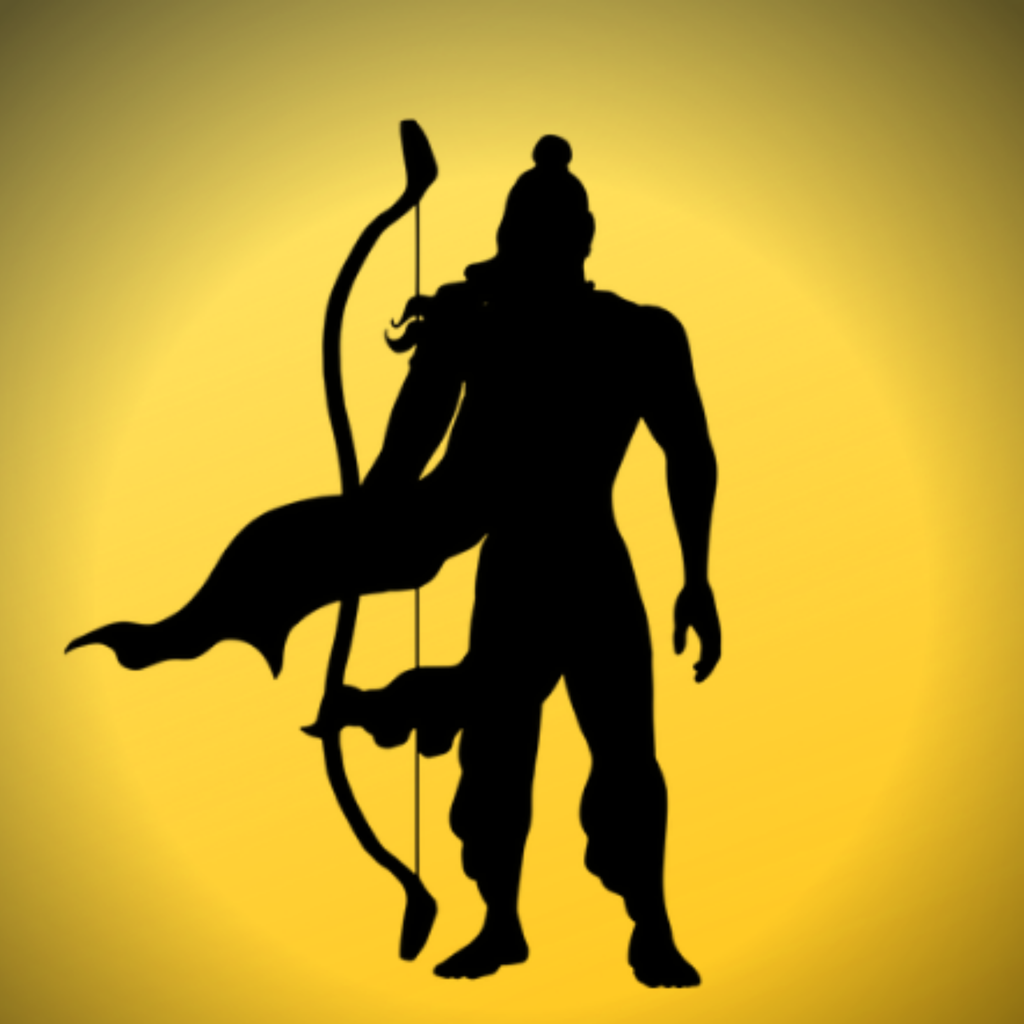
Kshatriyas protect the citizens and make sure that they adhere to the path of self realization and engage in duties that help fulfill the purpose of human life. In order to achieve this, the Kshatriyas themselves had to be saintly. Lord Krishna describes in Bhagavad Gita (4.2) how the science of God was passed down through disciplic successions and saintly kings understood them in that way. Such noble kings were not dictators but instead sought spiritual guidance from the brahmanas, and engaged everyone in their respective duties. An example of such an ideal king was Lord Rama during whose reign citizens were peaceful, happy, materially satisfied, and spiritually advanced.
#3 Vaishyas (Farmers, Merchants and Businessmen)
The vaishyas are farmers and businessmen. According to Bhagavad Gita (18.44), they possess the following occupational duties –
- Farming
- Cow protection
- Business
The Vaishyas are responsible for creating wealth and prosperity in the society. They maintain workers with abundant food and clothes. They trade ethically and pay taxes to the kshatriyas.
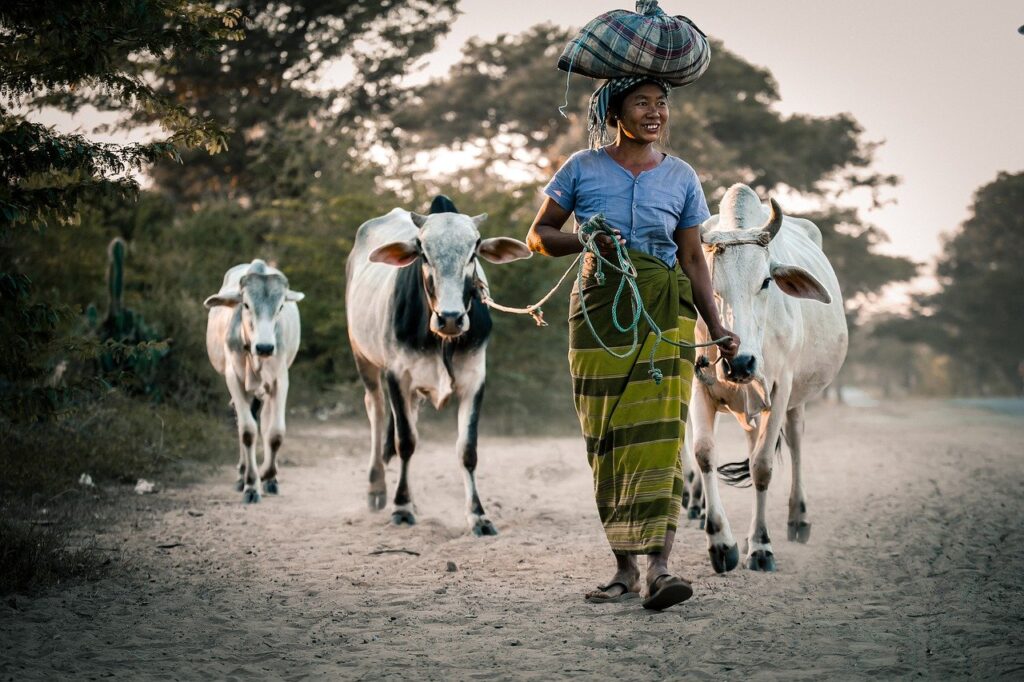
One of the primary occupations of the Vaishyas is cow-protection. Cow protection is considered essential for the material and spiritual survival of the society. Cow protection grows compassion, and her milk forms the finer tissues of the brain that helps comprehend spiritual matters.
#4 Shudra (Artisans and Workers)
The Shudras are employed by the other varnas. According to Bhagavad Gita (18.44), the Shudras offer their labor and service to the other varnas. Hence they depend on the other varnas for their maintenance.

Does birth determine one’s varna (caste)?
As previously discussed, there are four varnas (castes) according to the Vedas – Brahmana, Kshatriya, Vaishya, and Shudra. The brahmanas or the priestly class are considered to be the most esteemed, followed by the Kshatriyas, Vaishyas, and the Shudras. This is confirmed in both the srutis and the smritis. Now the question arises as to who is a brahmana? The living entity, the body, the caste, the knowledge, religiosity – of these which is the brahmana?
If one argues that the living entity is the brahmana, then it must be noted that as per the Vedic scriptures, the living entity is a spirit soul that transmigrates from one body to the other. Sometimes it occupies the body of a brahmana, sometimes that of a Kshatriya, sometimes shudra, or at times even the body of other animals. The soul is part and parcel of the Lord and its transmigration occurs depending on the Karma (pious or impious credits) accumulated by the individual. So the living entity can definitely not be the brahmana.

If it is argued that the body is the brahmana, then it needs to be understood that the bodies of all living entities, starting from the body of a so-called brahmana down to that of a ‘chandala’ or a barbarian, are made of the same five gross elements (earth, water, fire, ether, and wind). Birth, Death, and diseases equally affect all bodies. Furthermore, there is no law that brahmanas are white, the Kshatriyas are red, the vaishyas are yellow, etc. So there cannot be any distinction of caste based upon one’s body. Additionally, when the son of a brahmana lights the funeral pyre of his dead father, he does not sin killing a brahmana. Hence the body is definitely not the brahmana.
So is one’s lineage the brahmana? This also cannot be true as several great sages have been born of other living entities. Rsysringa was born from a deer, Kaushika muni was born of Kusa grass, Jambuka was born of a jackal, Valmiki was born from an anthill, Srila Vyasadeva was borne by a fisherman’s daughter, Gautama was born from the back of a rabbit, Vasistha muni was born from Urvasi and sage Agastya was born from a pitcher. Therefore, lineage is definitely not the brahmana.
Is knowledge then the ‘brahmana’? No this is not the case either as there have been great personalities in the past who were Kshatriyas or belonging to other castes possessing vast knowledge on Absolute truth. Yudhisthira Maharaja was very learned and so was grandsire Bhishma. Both of these great gentlemen were Kshatriyas. Similarly, religiosity is also not the determining factor as there are innumerable references of kings donating Gold in charity to others.

Who then is a brahmana? This question has been very nicely answered by Yudhisthira Maharaja and it is recorded in the Vana Parva of Mahabharata. The snake asked, ‘O Maharaja Yudhisthira, who is a brahmana and what is the object of knowledge? You are very intelligent, therefore I will be enlightened by your answer’. Maharaja Yudhisthira replied, ‘A person who possesses truthfulness, charity, forgiveness, sobriety, gentleness, austerity, and lack of hatred – Such a person is a brahmana’. The snake then enquired – ‘But, even Shudras possess these qualities. Many of them possess truthfulness, charity, freedom from anger, nonviolence, non-enviousness, and lack of hatred’. Maharaja Yudhisthira then clarified, ’If such symptoms are found in a shudra then he should never be considered to be a Shudra, just as a brahmana is not a brahmana if he does not possess these qualities. O snake! only a person who is endowed with the characteristics of a brahmana can be called a brahmana, otherwise he is simply a Shudra’.
Elsewhere the Brahma Sutras reveal –
tad abhava nirdharane ca pravrtteh
–
Whether a person belongs to a varna other than that of his birth may be ascertained by considering his qualities.
The Shanti parva of Mahabharata narrates a similar pastime in which Bharadwaja muni had a similar doubt and he clarified the same with Bhrigu Maharaja. He asked that since there were innumerable categories of animate and inanimate living entities – how can one possibly determine their castes?
Bhrigu Maharaja replied that there was not much difference between the various castes. When Lord Brahma initially created this universe, all the living entities were endowed with godly qualities and they were all brahmanas. Later on, as people became degraded, they attained the designations of different varnas (castes). He went on to explain that when the brahmanas commit violence, speak lies, become greedy, earn their livelihood by any and all activities, lose their purity by committing sinful activities, then they become degraded into shudras. Hence, it is the qualities, and not one’s birth and lineage, that determines whether a person is a brahmana. One who realizes the self, is always satisfied, devoid of faults like lust and anger, possesses qualities like peacefulness, self control, and is devoid of envy, thirst for material enjoyment, illusion and is untouched by pride, false ego and so on – such a person is a brahmana.
Innumerable incidents illustrating this fact are known to those who are well aware of Indian history. For example, Gadhi was the son of Kusika and belonged to the Chandra (moon) dynasty. He was the king of Kanyakubja. His son, Visvamitra, advanced to become a brahmana, a great Brahma rishi, by the strength of his austerities. Even the great king Bali Maharaja, bore sons, some of who became brahmanas and some of who became Kshatriyas. His brahmana sons came to be known as Baleya brahmanas, whereas his Kshatriya sons came to be known as Baleya Kshatriyas.
Towards the perfect society – Incorporating the Caste system :
The Brahmanas represent the Lord’s mouth, the Kshatriyas His arms, the Vaisyas His abdomen (belly, waist, thighs), and the Shudras are born of His legs. This has been confirmed in the Srimad Bhagavatam. Thus the implementation of the caste system is an arrangement by the Lord.
sri-camasa uvacha
Mukha-bahuru-padebhyah
purusasyasramaih saha
catvaro jajnire varna
gunair vipradayah prithak
(Srimad Bhagavatam , 11.5.2)
However, on a spiritual plane, all living entities are part and parcels of the Supreme Lord. The purpose of the caste system is to engage individuals, as per their nature and qualities, in the service of the Lord. Such a system is auspicious for the individual and helps elevate his consciousness. It is also beneficial for society at large. A particular individual is qualified for engaging in actions per his caste. A brahmana is qualified to bathing three times a day, deity worship, reciting the Vedas, teaching, serving as a priest, taking vows, leading the life of a brahmachari (celibate) or a sannyasi (renunciant). A Kshatriya is qualified for fighting righteous wars, ruling a kingdom, protecting others, participating in works of charity, and social relief. A Vaishya is qualified for raising and protecting animals, agriculture, and commerce. A shudra is qualified to serve the deity without mantras and serving the other three castes.

A person should perform the work and follow the rules that are most becoming of his nature (caste). By honest judgment, a person can ascertain the work and lifestyle suitable to himself. If a person cannot determine his traits, a competent authority must be consulted. The caste system that is prevalent in our society today is a perverted reflection of what it once used to be. Unless the society is systematically reorganized into appropriate castes, there is little chance of India regaining its lost glory. By desire of the Supreme Lord, the controller of all living beings, and the propounder of all rules and regulations, may there arise the perfect Caste system once again.